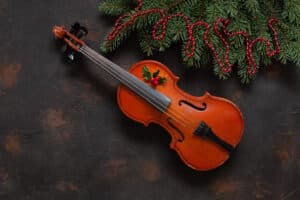
Tempo Press at the 2024 ASTA Conference
Thursday, March 21, 11:00am Ballroom D-E Vivace and ViBravo Orchestra Featured work: 1812 Overture Grade 3, String Orchestra, Peter Ilyich Tschaikowsky Arranged by Sandra Dackow
Music educators generally agree that the ability to sight-read is an important skill, necessary for the development of independent learners, and an indispensable part of training for musicians. According to Joyce Eastlund Gromko, “Just as reading comprehension is a basic component of most standardized tests of language arts literacy, so music sight-reading is a critical component of music literacy and a test of comprehension of the musical symbol system.”
Good sight-reading skills accelerate a student’s ability to read and prepare new music, allowing the student to approach a new piece of music with confidence and greater understanding without the need for teacher input. Good sight-readers learn to peruse a new piece of music and identify specific aspects that may cause difficulties as they read.
The reading of rhythm patterns (with their customary bowings) is the most important aspect of orchestra sight-reading. J. David Boyle found a high correlation between the ability to read rhythm at sight and the ability to read music at sight, as measured by the Watkins-Farnum Performance Scale. Charles A. Elliott found rhythm-reading ability to be the single best predictor of undergraduate wind instrumentalists’ sight-reading scores. Gary E. McPherson found that rhythmic errors outweighed all other types of errors in instrumental sight-reading. Thus, any program of sight-reading instruction should first address sequential rhythmic study using a consistent method of counting.
The effect of bow direction and bowing styles adds an additional layer of complexity to the sight-reading of string players over their woodwind and brass counterparts. While brass and woodwind tone is produced by airflow in one direction, string tone production is complicated by a combination of bow movements in two directions. Following the 20th-century string pedagogy of Paul Rolland, Shinichi Suzuki, and most modern string method books, bowing patterns should be introduced in natural groupings as they occur in the literature, beginning with simple rhythms grouped in bowing patterns of quarter notes and eighth notes followed by rhythms and bowings of sequentially increasing complexity.
Effects of scale and/or key have also been shown to have significant effects on student success in instrumental sight-reading. Any program of string sight-reading study should include a variety of common keys for orchestra, starting with easiest and progressing to more difficult ones.
The materials presented in Expressive Sight-Reading for Orchestra represent a curriculum for sight-reading study in the orchestra classroom that addresses each of the areas addressed above. Based on our research in the field and knowledge of the subject matter, the authors present a thorough approach to the development of ensemble sight-reading skills in the orchestra classroom.

Thursday, March 21, 11:00am Ballroom D-E Vivace and ViBravo Orchestra Featured work: 1812 Overture Grade 3, String Orchestra, Peter Ilyich Tschaikowsky Arranged by Sandra Dackow

The holiday season is a time for celebrating with friends and family, and what better way to do so than through music? If you’re a

Everything you need to know about Tempo Press at the 2023 ASTA Conference.

Everything you need to know about Tempo Press at the 2022 Midwest Clinic.
Tempo Press
A Division of Luck’s Music Library
32300 Edward Ave
Madison Heights, MI 48071
Ph: 800-348-8749
sales@tempopress.com

Be the first to know about new music, exciting news, deals and more!